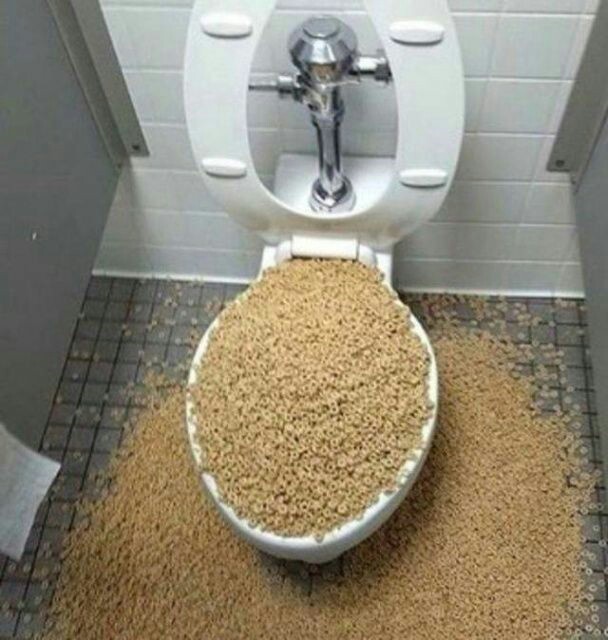They are making a few great points regarding What Can Happen If You Flush Food Down the Toilet? overall in this article down the page.

Intro
Many people are typically faced with the issue of what to do with food waste, particularly when it pertains to leftovers or scraps. One common concern that arises is whether it's fine to flush food down the toilet. In this write-up, we'll look into the reasons why people may take into consideration flushing food, the repercussions of doing so, and alternate techniques for appropriate disposal.
Reasons why people may take into consideration flushing food
Absence of awareness
Some people might not know the potential injury caused by flushing food down the bathroom. They might erroneously believe that it's a harmless method.
Ease
Purging food down the commode may appear like a fast and simple service to throwing away undesirable scraps, particularly when there's no close-by trash bin readily available.
Negligence
In some cases, people may just choose to flush food out of sheer idleness, without thinking about the effects of their activities.
Effects of flushing food down the toilet
Environmental impact
Food waste that winds up in rivers can add to contamination and damage aquatic environments. Furthermore, the water used to flush food can stress water sources.
Plumbing issues
Purging food can lead to blocked pipes and drains pipes, causing pricey plumbing repairs and troubles.
Kinds of food that ought to not be purged
Fibrous foods
Foods with fibrous textures such as celery or corn husks can obtain tangled in pipelines and trigger blockages.
Starchy foods
Starchy foods like pasta and rice can take in water and swell, leading to clogs in pipelines.
Oils and fats
Greasy foods like bacon or cooking oils ought to never be flushed down the toilet as they can solidify and create clogs.
Correct disposal methods for food waste
Making use of a waste disposal unit
For homes geared up with garbage disposals, food scraps can be ground up and flushed through the pipes system. Nonetheless, not all foods appropriate for disposal in this fashion.
Recycling
Certain food packaging products can be recycled, decreasing waste and lessening environmental effect.
Composting
Composting is an environment-friendly way to get rid of food waste. Organic materials can be composted and utilized to improve soil for gardening.
The relevance of appropriate waste administration
Decreasing ecological damage
Correct waste monitoring practices, such as composting and recycling, assistance reduce air pollution and preserve natural deposits for future generations.
Protecting plumbing systems
By avoiding the method of flushing food down the commode, house owners can stop costly pipes repairs and keep the stability of their plumbing systems.
Conclusion
To conclude, while it might be tempting to flush food down the bathroom for ease, it is essential to understand the possible effects of this activity. By taking on proper waste monitoring methods and taking care of food waste responsibly, individuals can contribute to much healthier plumbing systems and a cleaner environment for all.
FLUSH FOOD DOWN THE TOILET?
FLUSHING FOOD CAN CAUSE BLOCKED DRAINS IN YOUR HOME
All of the plumbing fixtures in your home are connected to the same sewer pipe outside of your home. This outdoor sewer pipe is responsible for transporting all the wastewater from your home to the Council sewer mains. Even small pieces of food that go down the kitchen sink can cause problems for your sewer. It should therefore be obvious that flushing larger bits of food, such as meat, risks a clog in either the toilet itself or the sewer pipes. Flushing greasy food is even more problematic because oil coagulates when it cools, coating the interior lining of your pipes.
THE TOILET IS NOT A BIN
Food isn’t the only thing that people shouldn’t be flushing down the toilet. People use the toilet to dispose of all kinds of things such as tampons, makeup wipes, dental floss, kitty litter and even underwear. Water goes to great lengths to educate residents about the high costs and stress placed on wastewater treatment systems simply from people flushing the wrong stuff down the toilet. It costs taxpayers millions of dollars each year, and homeowners thousands in blocked drain repairs.
FLUSHING FOOD IS A WASTE OF WATER
Flushing food is a waste of our most precious resource - water. In June this year Level 1 water restrictions were introduced to protect water supply from drought conditions. Much of New South Wales continues to be affected by prolonged drought with recent figures revealing up to 97 per cent of the state remains in drought. Depending on whether you have a single or dual flush toilet, every single flush uses between five and 11 litres of water. In the current climate this is a huge amount of water to be wasting on flushing food that should be placed in the bin (or better yet, the compost).
https://www.jabplumbingsolutions.com.au/blog/can-you-flush-food-down-the-toilet

Do you like reading up on Think Twice Before Flushing Food Down Your Toilet? Make feedback further down. We'd be delighted to hear your thoughts about this write-up. Hoping that you come back again in the future. Those who enjoyed reading our post plz don't forget to share it. Thank-you for going through it.
Request Appointment